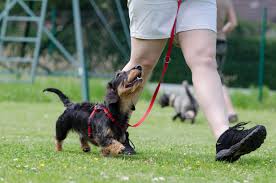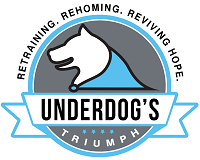
There seems to be no small amount of cute kids/babies and dog videos circling around on the internet. If you’d have asked me a few years ago how cute those were, I would have oooh’d and aaah’d like the rest of the world. However it paints a different picture if you ignore the cuteness of the kid and just focus on the body language of the dog. This got me thinking a lot about what our pets consider to be aversive as well as what aversive actually means.
Here’s the link to the kid/dog video, check it out and see what body language signals you can pick up: http://www.pawsomeanimals.me/index.php/2018/03/08/baby-sneaks-husky-huskys-reaction-quickly-going-viral/
Want to see how you did? Scroll to the bottom and check out the signals I saw when I watched the video.
By definition, an aversive is something that we tend to try to avoid. This something could be situation, a behavior or an actual object. In dog training some dog trainers use objects that cause unpleasantness when the dog does an unwanted behavior in order (they hope) to decrease the likelihood the dog will repeat this undesired behavior. Some tools that would be considered aversive by all modern, educated trainers would be prong or shock collars.
There’s some contention in the educated dog training community about using tools like the Easy Walk harness or a Head Halter while teaching the dog to walk on a loose leash. Some folks in the community claim these tools are aversive as they change the natural way a dog walks. Others, myself included, see these as tools that can be used to help owners manage larger dogs safely and responsibility. In my mind the dog has to be on a leash so whether you use a normal harness, flat collar or a leash at all you will be restricting the movement of the dog in some way.
When we label things/tools as being aversive we do need to take into account the dog we are working with as well as the fact that tolerance does not equal enjoyment. For example, Esther, my own dog, doesn’t like sudden loud noises. To her me banging the pots and pans while doing dishes would be considered aversive. She will always slink off into the living room whenever I start getting ready to do them. Other dogs might not care at all and sleep by your feet while you clean. To that dog doing dishes isn’t aversive, just another random thing humans do.
That brings me around to an important thing to consider when using a new tool. The tool isn’t training. It’s management. It’s using something to get the outcome (oftentimes only initially) that you want. Is it less likely for a dog to pull in a head harness? Yes. Is it impossible? No. If you don’t couple a management solution to a training solution the dog learns nothing and will quickly go back to their old ways – an in my opinion make that management tool become aversive. A head halter on a pulling dog can ride up and rub on the dog’s muzzle.
That’s often why we see folks who only use punishment based methods having to continually increase the severity of the punishment in order to continue to get their desired outcome. The issue is they’re only managing the solution (temporarily) and not providing the dog any other guidance or motivation to change. So the dog reverts back to his old way.
In summary, when you want to change a dog’s behavior, you’ll want to combine a management solution and a training solution together for best results. Management gives you instant relief from the issue and stops the dog from rehearsing the bad behavior (aka making it a habit). Training teaches your dog a more rewarding replacement behavior to do instead. Regardless of what tools you use, you always want to use the least aversive tool out there for the dog you’re working with. Happy training!
Dog & Kid Body Language Signals (Spoiler!)
0:01 – 0:07 – Disengage, looks away from baby, ignoring
0:08 – Baby slaps dog, dog shows a stress signal – licks lips
0:10 – Stress yawn, licks lips
0:13 – Looks away from baby again, disengages, long slow blinks
0:17 – Baby grabs ears. Dog shakes off (stress)
0:19 – Dog rolls over onto back, stress licking
0:20 – Dog licking baby
0:23 – Baby presses down on dogs throat. Dog licks baby more frequently and quickly
0:25 – Baby grabs huge pile of fur, stress lick and disengage (looks away),
0:28 – Dog puts his mouth around baby’s arm
0:34 – Dog looks away, stress licks, continues to mouth the baby
0:40 – Continually licking baby’s face.
